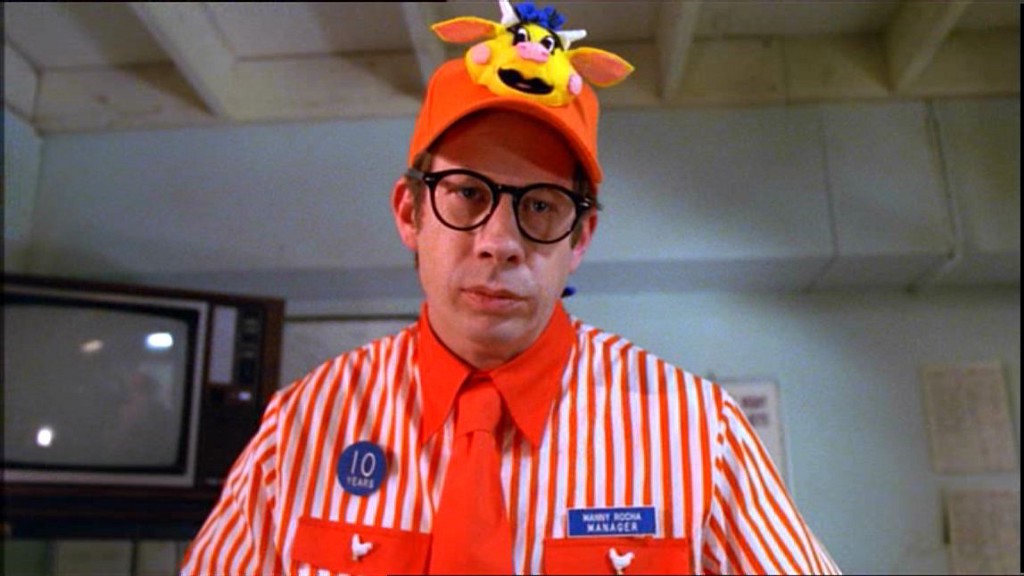The Cost of the Work Uniform: Retail and Restaurant Edition

As CaitIín Eagen explored this week, transportation is just one of the unsubtle ways employers enforce classism while hiring.
Do You Have Reliable Transportation?
Much like the automotive Catch-22 — “I need a car to get to work, but I need a job to buy a car,” — employees are often asked to buy job-specific clothing long before they receive their first paycheck. So, what are the hidden costs of the work uniform?
My first job was at a bookstore. I was 15, I made $6 an hour, and they told me to wear whatever I wanted. I took that to mean the Rue 21 tops I slowly collected on my lunch break. I purchased clothes because I wanted them and wore whatever suited my fancy.
Total cost: $0
At 16, I got a job making $6.50 an hour at the local grocery store. We had to wear khaki pants and an oversized burgundy polo they provided, complete with giant clip-on name tag. Additional shirts cost $10. I eventually discovered that if you showed up at work without your shirt, you could get a bookkeeper to slip you one “just for that shift” and then conveniently forget to return it. The other way to get free shirts was to have a departing colleague bequeath you theirs. I don’t recall ever actually paying for one. This would hold true for many of my future jobs.
Once I started the job, I realized with triumph that I was right to interpret the dress code requirement as simply khaki-colored, not actual khaki material, and the pleat-front Dockers my mom bought me would go unworn except on laundry day. Over my two years there, I amassed a few pairs of skintight tan flares to showcase that I was, in fact, a high school female and not actually a middle-aged white dude.
Total cost: $80
My next job was at the big bulls-eye, home of red-and-khaki-cloaked cashiers. I got $7.36 an hour to fold clothes and put away fitting-room rejects. I carried over some of the khaki pants, but the red shirts proved tricky.
There was slight leeway in the color of the clothes, but shirts were not to veer too far orange or burgundy, and pants could not lean too far into brown or olive. I knew this based on the color-wheel some exasperated HR manager had constructed out of paint chips and posted at the time clock. I liked to imagine the conversations leading up to the decision to construct this wheel, and the subsequent visit to the paint store to acquire paint chips with which to build it. “Desert Sable is the perfect shade for pants!” “I am so tired of people wearing Velvet Cabernet shirts and thinking they can get away with it!”
My wardrobe ended up consisting of sand-colored jeans from the clearance rack and a few $6 tees and polos purchased with my 10% discount. With company permission, I also paid $10 for a pink breast cancer awareness shirt with a glittery bull’s-eye in the center one October, only to then be told it was “too confusing for the guests.”
Total cost: $45
Blockbuster gave us shirts, sometimes polos and sometimes movie-promo tees, and I got to bust out my trusty khakis yet again. I found out the hard way that my grocery-store khakis had worn through by this point, so I ponied up for more pants during the year I worked there.
Total cost: $40
The Japanese steakhouse provided me with a kimono, but the black pants, non-slip shoes, and black apron fell to me to procure. This was quite an investment when my only guaranteed wage was $2.15 an hour. I borrowed money from my grandma until the tips started coming in. I bought two pairs of dress pants at Target for $25, paid $10 for an apron, then bought another when the pockets came unstitched, and spent at least $50 trying to find the perfect non-slip shoe. (Walmart, unisex rubber clogs, $20. It would take me years to discover them.) I also needed some sort of undershirt (I picked up some white tanks) and black socks.
Total cost: $114
My next three serving jobs, in quick succession, required the following: black pants and shoes, white button-ups and ties (which I went through rapidly); black socks (only black, only ever black); a $15 black button-up from Kmart; more Walmart slip-ons. One place did provide me with what remains to this day my best work shirt ever. It was black with white stripes, wrinkle-proof (I swear), and somehow hid spaghetti sauce stains. By this point I was married, so I was lucky enough to have another income to help defray initial costs.
Total cost: $145
My very last serving job gifted us white chef coats, and by this point I had learned the magical power of Dawn in getting grease stains out. I already had the apron, undershirts, black pants, and black shoes, bringing my total cost for this job to the cost of the dishwashing detergent (plus more black socks).
Total cost: $13
Total cost for 13 years of work uniforms: $437
Mallory is now a teacher, which means she almost exclusively wears loose-fitting dresses off the Target clearance rack to work, along with cardigans (always cardigans) and ballet flats. She refuses to wear black pants, and you won’t find red or khaki anywhere in her closet.
Support The Billfold
The Billfold continues to exist thanks to support from our readers. Help us continue to do our work by making a monthly pledge on Patreon or a one-time-only contribution through PayPal.
Comments